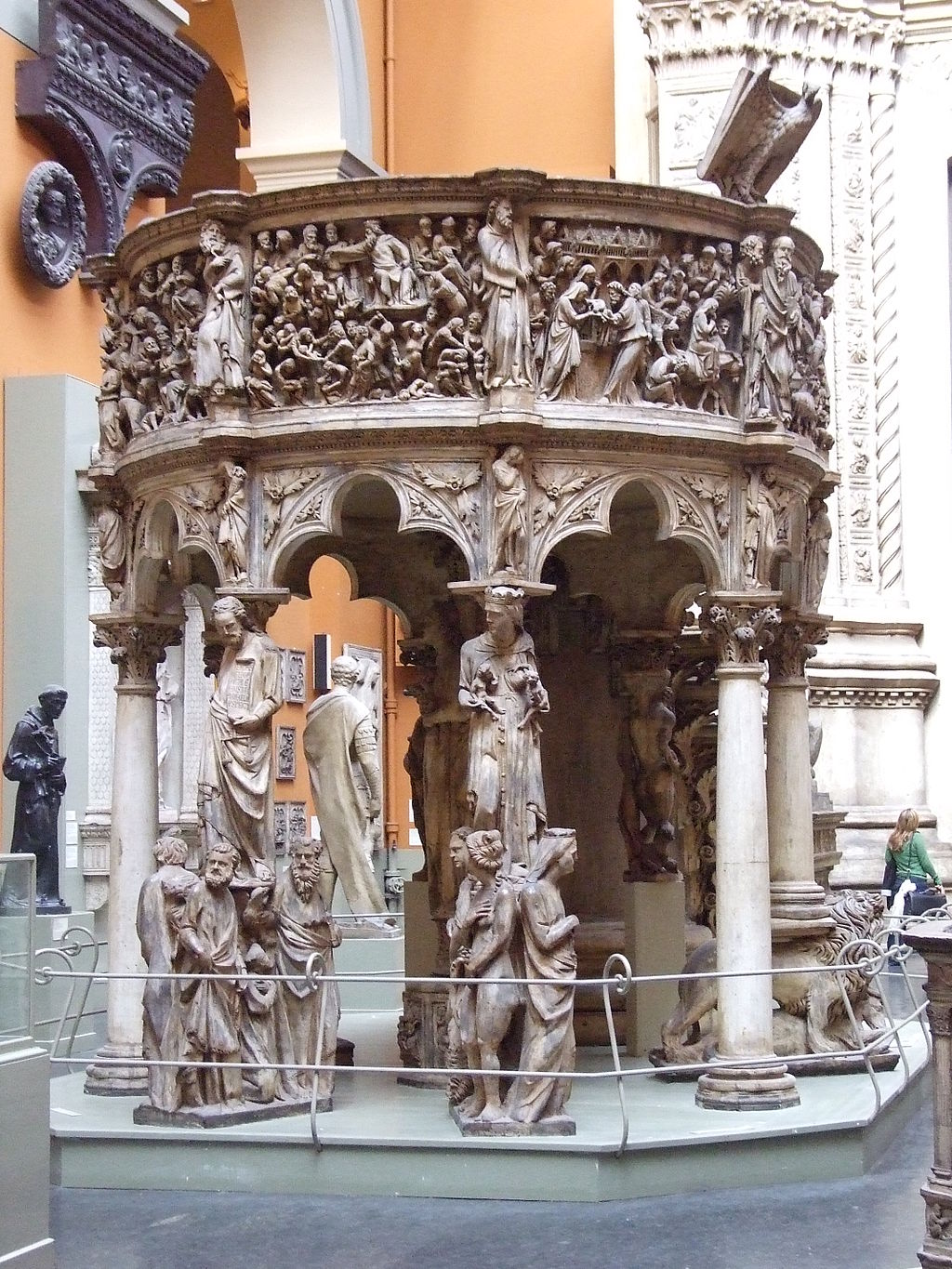Pulpit

|
| This pulpit by Giovanni Pisano was cast after a marble original in the Cathedral, Pisa. The original is situated on the left side of the nave, before the crossing. This cast can be found in the Victoria and Albert Museum Cast Court, London. |
A pulpit is an elevated structure, typically made from stone or wood, for a preacher or reader to address the congregation. In the Catholic religion, the pulpit is reserved for members of the clergy. The word pulpit originates from the Latin 'pulpitum' which means platform or staging.
Pulpits may be fitted with an acoustic canopy above and sometimes behind the preacher. Often made from wood, this canopy (referred to as a sounding board, tester or abat-voix) can help project the speaker’s voice.
Pulpits were initially incorporated into church buildings during the later Middle Ages. A stand known as an ambo was used in the early Middle Ages, up until roughly the 14th century.
Pulpits are sometimes elaborately carved. During the Italian Renaissance, pulpit reliefs were often undertaken as commissions by artists.
In some Protestant churches, the pulpit is considered the most important piece of furniture in the sanctuary. In both Protestant and Catholic churches, the pulpit is often placed in a position that projects closer to the congregation.
In English churches, there are a few instances of pulpits on wheels, which allowed them to be placed in an optimal position. There are also instances in Anglican churches where three-decker pulpits can be found. These combined a reading desk, a clerk’s stall and a preacher’s platform - one above the other.
[edit] Related articles on Designing Buildings Wiki
Featured articles and news
Latest Build UK Building Safety Regime explainer published
Key elements in one short, now updated document.
UKGBC launch the UK Climate Resilience Roadmap
First guidance of its kind on direct climate impacts for the built environment and how it can adapt.
CLC Health, Safety and Wellbeing Strategy 2025
Launched by the Minister for Industry to look at fatalities on site, improving mental health and other issues.
One of the most impressive Victorian architects. Book review.
Common Assessment Standard now with building safety
New CAS update now includes mandatory building safety questions.
RTPI leader to become new CIOB Chief Executive Officer
Dr Victoria Hills MRTPI, FICE to take over after Caroline Gumble’s departure.
Social and affordable housing, a long term plan for delivery
The “Delivering a Decade of Renewal for Social and Affordable Housing” strategy sets out future path.
A change to adoptive architecture
Effects of global weather warming on architectural detailing, material choice and human interaction.
The proposed publicly owned and backed subsidiary of Homes England, to facilitate new homes.
How big is the problem and what can we do to mitigate the effects?
Overheating guidance and tools for building designers
A number of cool guides to help with the heat.
The UK's Modern Industrial Strategy: A 10 year plan
Previous consultation criticism, current key elements and general support with some persisting reservations.
Building Safety Regulator reforms
New roles, new staff and a new fast track service pave the way for a single construction regulator.
Architectural Technologist CPDs and Communications
CIAT CPD… and how you can do it!
Cooling centres and cool spaces
Managing extreme heat in cities by directing the public to places for heat stress relief and water sources.
Winter gardens: A brief history and warm variations
Extending the season with glass in different forms and terms.
Restoring Great Yarmouth's Winter Gardens
Transforming one of the least sustainable constructions imaginable.






















